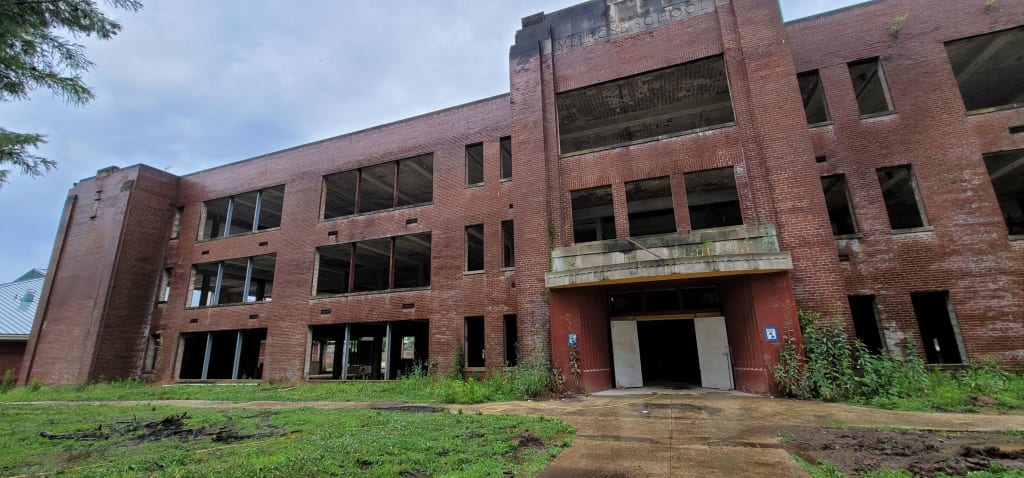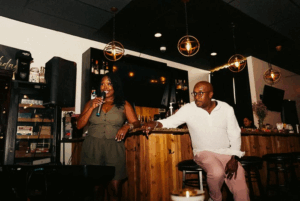The former Melrose High School building in Memphis could have been like any other shuttered public school in the country. Built in the 1930s and closed in 1979, the three-story brick building had become obsolete and unnecessary. But unlike other old schools around the country, this one had a unique place in U.S. history. The school is located in a Memphis neighborhood called Orange Mound, which became the first subdivision in America built specifically for Black homebuyers when it was founded in 1890. The school started out of a modest home and graduated its first class in 1894, subsequently educating generations of the city’s Black youth before its eventual closure.

Now the former school building is being brought back to life as a kind of centerpiece for the neighborhood, celebrating its history while turning a beloved but abandoned space into something new. In a $16 million adaptive reuse project led by the city of Memphis, the school is opening April 26 as Historic Melrose, a combination public library and Black genealogy center, community space, and 28-unit senior housing facility. It’s an example of an emerging type of mixed-use development that pairs housing with contextually relevant community amenities.
The project is part of a $200 million bond package that’s making targeted investments in anchor areas across the city. Despite being empty and unused for more than 40 years, the Melrose School has long been seen by the community as a center and source of pride. “There has always consistently been a community of people coming out and asking what can be done with the school building,” says Ashley Cash, director of the division of housing and community development for the city of Memphis. “At a certain point there was some discussion around demolition, and the alumni association, the community organizations in the area really came out against that.”

Cash says the city began working closely with community members around 2018 to create a vision for the school. “They wanted a place where community members of all ages can gather and feel safe and comfortable, and they wanted a place to really be able to recognize and reflect on the history of the community,” she says.
The school building’s civic nature lent itself to becoming a kind of community center. Since the neighborhood had never had a library, the first floor would become one. In an effort to appeal to all generations, the space is outfitted with facilities like a podcasting studio as well as the genealogy center. Colocating housing above a library is an approach being taken in other cities, and it’s been shown to be a successful way of spurring community and social engagement. Adaptive reuse of the school building preserves a historic structure that’s listed on the National Register of Historic Places.

The city is currently working with a developer to build out senior housing on the second and third floors of the school, helping to fill a housing gap in the city. “Right now we are around 30,000 units short of quality affordable housing,” Cash says. “When our seniors are out looking for housing, they’re wait-listed on just about every senior facility in the city of Memphis.”
But Cash says it’s important to make the adaptive reuse project about more than just seniors. The city is also hoping to create new affordable housing for families near the school as a way of injecting a mix of residents into the neighborhood. “A lot of times you’ll have your senior center or senior facilities and all things catering to seniors in one part of town or one part of a community,” Cash says. “We’re trying to create an intergenerational bank and intergenerational community that we feel will be a model for the rest of the city and hopefully the country.”
This article was originally featured at “fastcompany.com“






























![The countdown is ON, Memphis! We’re officially 30 days out from the @unitememphis 5K + 1-Mile Walk/Run—and this year, we’re stepping into unity on 901 Day 🙌🏽
📍 Monday, September 1 | National Civil Rights Museum
🕘 Start time: 9:01AM
🎶 Food, music & fun to follow
Whether you’re walking or running, this isn’t just a race—it’s a movement. And there’s no better time to join in than now. 👟✨
🎓 COLLEGE STUDENTS: Be one of the first 100 to register using your .edu email with promo code NEXTGENUNITE and your ticket is just $10 (that’s a $32 savings 👀). Limit 2 per person, so tell a friend!
Let’s walk. Let’s run.
Let’s #UniteMemphis 💛
🔗 [link in bio]](https://wearememphis.com/wp-content/uploads/sb-instagram-feed-images/526805187_18335272954206022_6056852028660485499_nfull.webp)






